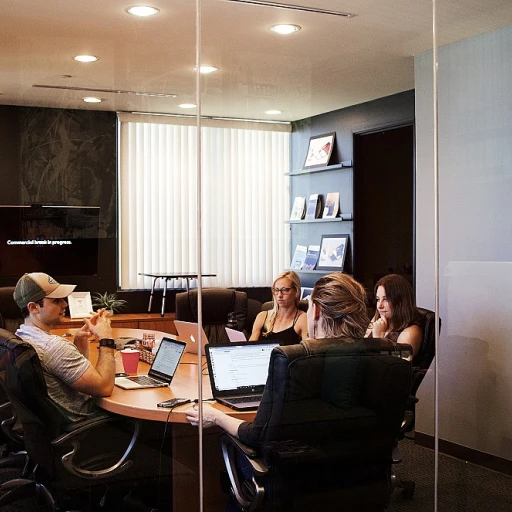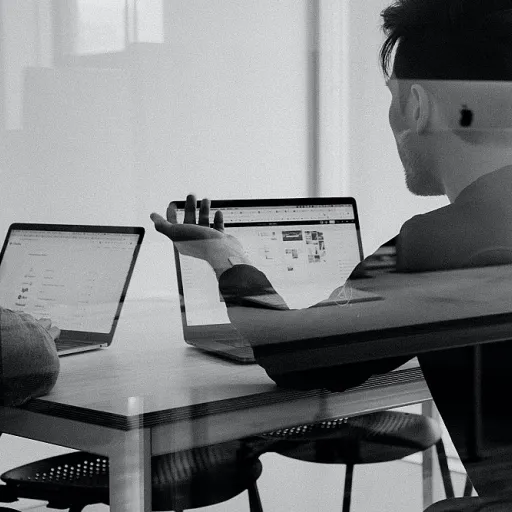
Supporting essential document workflows
Streamlining Document Handling for Daily Operations
In a typical UK office, printers remain at the heart of essential document workflows. Despite the rise of digital solutions, the need for physical documents persists across many business processes. Whether it’s for contracts, invoices, or internal memos, having reliable printing technology is crucial for maintaining productivity and accuracy.
- Variety of Printers: Offices often use a mix of laser printers, inkjet printers, and even dot matrix printers. Each type has its main purpose—laser printers for high quality and fast output, inkjet printers for photo-quality prints, and matrix printers for multipart forms or impact printing.
- Efficient Document Editing: Printing allows staff to review, edit, and annotate documents on paper, which can sometimes be more effective than digital-only workflows. This is especially true for complex reports or when multiple team members need to collaborate.
- Supporting Hybrid Work: With hybrid and remote work arrangements, having access to a reliable office printer ensures that employees can print essential documents when needed, whether they’re in the office or working from home.
- Quality and Speed: Modern printing technology, such as laser printers and ink printers, delivers high quality output at impressive speeds. This reduces waiting time and helps teams meet tight deadlines.
- Document Security: Physical documents can be securely stored or shredded as needed, supporting compliance and confidentiality requirements.
It’s also worth noting that the choice of printer paper and the type of printer—be it a Hewlett Packard laser printer, thermal printers, or impact printers—can affect the overall quality and efficiency of office workflows. Offices that handle sensitive or high volume printing benefit from investing in robust, high quality printers and maintaining a clear matrix for document handling.
For those looking to further enhance office efficiency, integrating employee monitoring solutions can provide valuable insights into print usage and help optimise resource allocation.
Facilitating compliance with UK regulations
Ensuring Document Security and Legal Compliance
For UK companies, maintaining compliance with regulations is a core responsibility. Printers play a vital role in this process, especially when it comes to handling sensitive documents. Many regulations require that certain records be kept in a physical format, and printing technology ensures these needs are met efficiently.
- Secure Printing: Modern office printers, including laser printers and inkjet printers, often feature secure print options. These functions help protect confidential information, ensuring only authorised staff can access printed documents.
- Retention of Physical Records: Regulations such as GDPR and industry-specific standards sometimes require businesses to keep physical copies of contracts, invoices, or HR files. Printing on high quality printer paper using reliable machines like Hewlett Packard laser printers or ink printers helps meet these requirements.
- Audit Trails: Many advanced printers produce logs of print jobs, supporting audit processes and helping companies demonstrate compliance during inspections.
Different types of printers, from impact printers like dot matrix printers to high quality photo printers, offer solutions for various compliance needs. For example, matrix printers with a print head are still used for multipart forms in some sectors, while laser printers are preferred for their speed and clarity in legal documents.
It’s also important to consider the risks of digital-only workflows. While digital files are convenient, physical printouts can reduce the risk of data loss due to computer failures or cyber incidents. This is especially relevant when storing critical business documents.
For more guidance on managing technology-related office challenges, such as screen block issues that can impact access to digital files, you can read this practical guide for UK office managers.
Enabling effective internal communication
Building Clear Communication with Printed Materials
In UK offices, effective internal communication is essential for smooth operations and team collaboration. While digital channels are widely used, printers and printing technology still play a vital role in ensuring that important information is shared and understood by everyone. Physical documents, such as memos, notices, and policy updates, offer a tangible way to reinforce key messages and keep staff aligned with business objectives.
- Clarity and Accessibility: Printed materials are easy to distribute and display in communal areas, making sure that essential updates reach all employees, including those who may not be at their computer throughout the day.
- Consistency: Using high quality printers, such as laser printers or inkjet printers, ensures that documents are clear and professional, reducing misunderstandings caused by poor print quality or digital distractions.
- Supporting Different Work Styles: Some team members prefer reading from paper rather than screens, especially for complex information. Providing printed documents helps accommodate these preferences and supports inclusivity in the workplace.
Matrix printers, dot matrix printers, and impact printers are still used in some UK businesses for specific tasks, such as printing multi-part forms or logs. Meanwhile, modern laser and inkjet printers produce high quality documents for everyday office needs. The main purpose of these devices is to ensure that communication remains reliable, whether it’s a quick memo or a detailed report.
For offices managing a high volume of documents, choosing the right types printers—such as thermal printers for labels or photo printers for visual materials—can further streamline communication. Printer paper selection also matters, as the right paper enhances readability and professionalism.
Integrating printers into your office’s communication matrix not only supports daily workflows but also helps maintain compliance and efficiency across departments. For example, when sharing financial updates or policy changes, having a physical copy can be crucial for reference and record-keeping. If you’re interested in how automation can further streamline these processes, you might find this guide on streamlining bookkeeping for convenience stores through automation useful.
Enhancing client presentations and proposals
Creating a Lasting Impression with Printed Materials
When it comes to client presentations and proposals, the quality of your printed materials can make a significant difference. In the UK business environment, where professionalism and attention to detail are highly valued, using the right printers and printing technology is essential for delivering high quality, impactful documents.
Laser printers and inkjet printers are commonly chosen for their ability to produce sharp text and vibrant images. Laser printers, in particular, are known for their speed and precision, making them ideal for high volume print jobs. Inkjet printers, on the other hand, excel at producing photo-quality images, which can be useful for marketing materials or visual-heavy proposals. For more specialised needs, such as printing on different types of paper or producing unique textures, matrix printers and dot matrix printers still have their place in some offices.
- Professional appearance: Printed proposals and presentations using high quality printer paper and the right ink or toner help ensure your documents look polished and credible.
- Physical copies for meetings: Having physical documents on hand allows clients to review, annotate, and discuss key points during meetings, which can be more engaging than digital-only formats.
- Customisation and flexibility: Modern printers, including thermal printers and photo printers, offer a range of options for customising materials to suit specific client needs.
While digital tools are important, the main purpose of printing in this context is to support your business’s reputation and communication. A well-chosen printer, whether it’s a Hewlett Packard laser printer or a reliable inkjet printer, can help your office deliver documents that stand out. The ability to quickly edit and print updated proposals also saves time and ensures accuracy, which is crucial in fast-paced business environments.
Ultimately, investing in the right types of printers and understanding the strengths of each printing technology enables UK companies to present themselves at their best, reinforcing trust and professionalism with every printed page.
Supporting hybrid and remote work arrangements
Bridging the Gap Between Remote and Onsite Teams
As hybrid and remote work arrangements become more common in UK offices, printers remain essential for maintaining business continuity. While digital tools are vital, there are still many situations where physical documents are needed. For example, contracts, signed agreements, and annotated reports often require a tangible format for legal or practical reasons.
- Access to physical documents: Employees working from home or different locations can use networked printers to access, print, and share important documents. This ensures everyone has the same high quality information, whether it’s a matrix printer for basic needs or a laser printer for more professional outputs.
- Consistency in document quality: Using the same types of printers—such as inkjet printers, laser printers, or even dot matrix printers—across locations helps maintain consistency. This is especially important for branded materials, proposals, or client-facing documents.
- Efficient document editing and review: Sometimes, editing on paper is more effective than on a computer screen. Printing technology allows employees to annotate, highlight, and review documents physically, reducing digital fatigue and supporting better focus.
Modern office printers, including ink printers, thermal printers, and photo printers, support a range of needs. Whether printing high quality presentations or everyday paperwork, the main purpose is to keep workflows smooth and accessible. Printer paper and the right printing technology—like Hewlett Packard laser printers or liquid ink inkjet printers—ensure that documents are always ready when needed, wherever your team is based.
Reducing digital fatigue and improving focus
Helping Employees Stay Focused in a Digital World
With the rise of digital technology in UK offices, employees often face digital fatigue from constant screen exposure. Printers play a crucial role in reducing this fatigue by offering a physical alternative to digital documents. When staff can print out important documents, reports, or meeting notes, they can step away from their computer screens and engage with information in a more focused way. This simple shift from digital to paper can help improve concentration and reduce eye strain.
Different types of printers, such as laser printers, inkjet printers, and even dot matrix printers, offer various printing technologies to suit business needs. For example, laser printers and inkjet printers produce high quality printed materials, making it easier for employees to review and edit documents by hand. This is especially helpful for tasks that require careful attention to detail, such as proofreading contracts or annotating project plans.
Here are some ways printing supports focus and reduces digital fatigue in the office:
- Allowing employees to print and review documents on paper, which can be less tiring than reading on a screen
- Supporting brainstorming sessions with printed handouts, enabling more interactive discussions
- Providing high quality printouts for training materials, making it easier for staff to absorb information
- Offering a break from digital devices, which can help maintain productivity throughout the day
Matrix printers, including dot matrix and impact printers, are still used in some UK companies for specific tasks, such as printing multi-part forms or continuous paper documents. These printers produce physical copies that are easy to distribute and review without relying on digital devices.
By integrating a range of printers—such as ink printers, laser printers, and thermal printers—offices can create a balanced workflow that supports both digital and physical document management. This approach not only helps reduce digital fatigue but also ensures that employees have access to the right tools for every task, whether they need to print high quality presentations or quickly produce internal memos.













